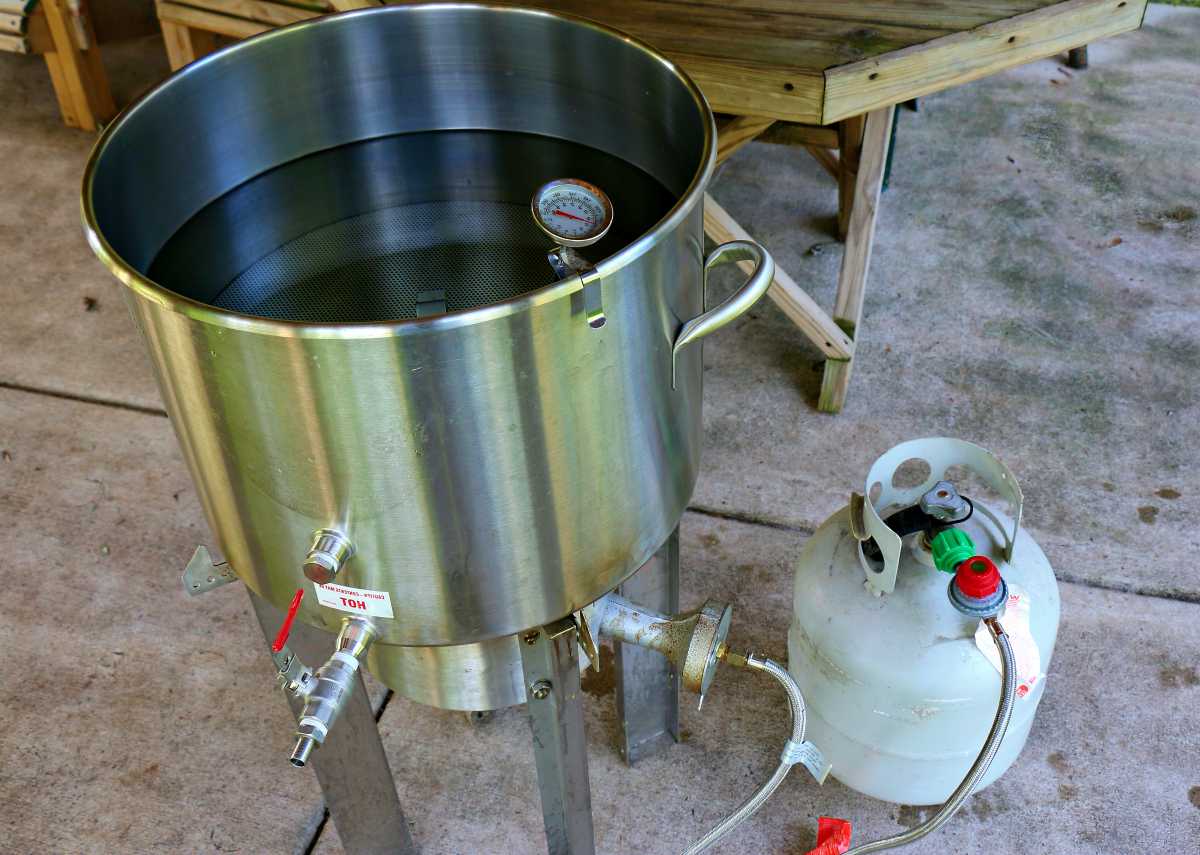The following blog post How to Start a Campfire is available on Total Survival
These 3 steps will help you get a campfire started in very little time!
RELATED: 21 Savory Campfire Recipes For Delicious Meals Outdoors
DIY Campfire
When you think about camping, it’s not unusual to picture a roaring campfire.
This is because a part of our brain remembers our primal history, in a time where fire meant the difference between life and death. For example, vibrant flames could mean warmth and protection from wild animals, a beacon of light to guide wandering tribe members home, or a means of preparing meat from a hunt.
Today, a campfire can still mean warmth on a chilly night or a way to cook meals in the outdoors. However, in modern times, it can also mean a gathering place for friends and family to sit and swap stories, relax, roast marshmallows, or just look contemplatively into the flames.
The “life or death” aspect of it is – usually – no longer a problem.
Of course, to enjoy the modernized meaning of a campfire, you must first build a campfire.
Step 1: Create Your Fire Bed
First, you need to know if campfires are allowed at your campsite. Most sites have this information available online or posted throughout the camp, but if in doubt, don’t be afraid to ask.
After getting approval, it’s time to think about safety. If there’s already a fire ring, you’ll want to clear it of any old ash and charcoal. For cold ashes, you can scoop it into a plastic bag to dispose of it properly. Otherwise, push them to the edge of the fire pit.
If you need to create your own fire ring, you’ve got to pick your area very carefully. You don’t want any stray sparks to start a wildfire, so find a spot where you can clear 8 to 10 feet of any dead or dry vegetation.
Next, dig at least 3 to 4 inches deep in the center of your fire area. The dirt can be kept to one side in case of emergency, or used to create a firewall.
Bonus tip: If there are any loose rocks in the area, use them to fortify your campfire’s wall.
RELATED: 18 Survival Gear Items From The Dollar Store
Step 2: Gather Your Campfire Ingredients
There’s more to a campfire than just wood, so it’s time to get foraging.
First, you’ll need some tinder. This is the smallest, easiest burning fire material – things like wood shavings, wadded paper, cardboard strips and dryer lint. Another option is store-bought fire sticks or fire starters to save time and effort.
Second, you need kindling. These are a size up from your tinder, and will keep the flames going after the tinder has burned up. The most common form of kindling is dry twigs, about the size of a pencil. If the only ones you can find are damp, use your survival knife to whittle away the bark.
Finally, you’re ready to collect your fuelwood. Without fuelwood, you have no campfire – so make sure to gather plenty. You don’t need to use larger logs exclusively: save those for when your fire is roaring. Start with some that are about as thick as your wrist. You can even use whole logs later on or split them with your ax.
Bonus tips: while fuelwood can be a little damp, it’s very important that your tinder and kindling be bone dry. If a twig or stick bends rather than snaps easily, it’s too “green” (wet).
Always collect at least twice as much tinder, kindling and fuelwood than you think you’ll need.
Never break or cut branches from the trees in your campsite. In many places, this is illegal. Even if it isn’t, if everyone were doing it, we’d have an even more serious deforestation problem than we already do. Either bring your own wood (if possible) or make sure you’re allowed to use fallen limbs.
RELATED: How to Use an Ax in Bushcrafts
Step 3: Build Your Fire
There are 3 ways to build your campfire, each with their own merits.
The teepee fire lay starts with placing a bundle of tinder in the middle of your fire pit. Form a teepee with some kindling, with a small opening on the windward side to allow your fire to get the air it needs. Start adding progressively larger kindling to the teepee until you’re ready to start using your fuelwood. This too will be built in a teepee structure.
Your second option is the lean-to fire lay. Here, you start by sticking a long, sturdy piece of kindling into the ground at a 30-degree angle, with the end pointing into the wind.
After placing some tinder under this support stick, start adding smaller kindling around it. Next, begin laying larger kindling against the kindling stick to form the lean-to. Add a second layer of kindling. Once your campfire is roaring, you’ll be able to add the first fuelwood.
Third, and most popular for long-lasting campfires, is the log cabin fire lay. Start off with a small teepee build (first layer of kindling), then lay two pieces of fuel fire on either side. Place another two logs on top of these, creating a square. Keep building until you’ve got a cabin-like structure, then add some small kindling to the top.
Finally, you’re ready to light your tinder.
Bonus tip: Never squirt charcoal fluid into your campfire, as the flames can travel up the stream – and never, ever use gasoline!
RELATED: Ways To Start A Fire | 17 Unconventional Tricks And Techniques
Putting Out Your Campfire
You’re the last person awake and ready to go to bed. You know to never leave fire unattended for any length of time for any reason other than a true emergency. So what do you do?
You can start by sprinkling some water over the flames or coals. Don’t pour – just sprinkle. Otherwise, your fire pit is going to get flooded and you (or the next campers) won’t be able to start the next fire. Stir as you sprinkle, as this will ensure all your coals get coated.
Once it stops hissing, you’re almost done! To make sure, hover the back of your hand over the ash. If you’re still feeling any heat, it’s not safe to leave just yet.
Leave your fire pit as is if you’re going to be using it again in a few hours or the next day. However, if you’re leaving the campsite, leave it as clean as you can for the next group. Scoop up your ashes and any remaining charcoal in a plastic bag to be properly disposed of. You can do this by scattering them across the campsite or in designated areas.
If you made your own campfire area, leave the space as you found it. Use the dirt you displaced to cover your campfire spot.
Bonus tip: Keep in mind that it takes about 20 minutes to get your fire completely out, so plan ahead and start early.
RELATED: 26 Badass Camping Hacks For Your Next Trip
This Article Was First Found at survivallife.com
Read The Original Article Here
See Full Article Here: How to Start a Campfire




